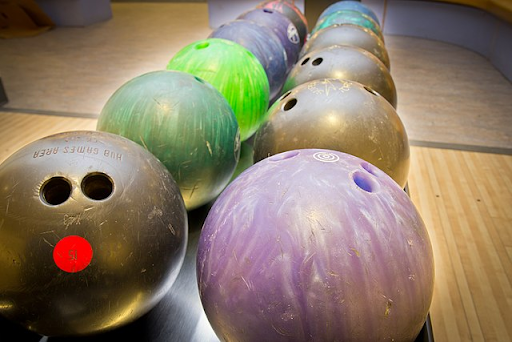From White Russians to Norwich Terriers
A Brief History of Cult Cinema

Bowling. The Dude’s favorite pastime in one of the quintessential cult films, The Big Lebowski.
September 21, 2022
Sometimes a great movie will be released and met with immediate success, other times great movies go under the radar; whether audiences were baffled or the producers lacked a marketing budget many films only gain their deserved popularity long after their initial release. These films are called cult classics.
Cult films have existed since the dawn of cinema, a notable early example is the german vampire film Nosferatu which was kept alive through illegal bootlegs, but the first true cult classic was Charles Laughton‘s Night of The Hunter. Night of The Hunter is a horror film about a preacher gone mad full of stark expressionist imagery. Upon its release, the film bombed and the director, deeply embarrassed, vowed to never direct another film. About a decade later, the film was rediscovered by film school students and the film earned its place as a classic.
The idea of the cult film as we know it took shape in the 1960 and 70s. An explosion of counter-culture independent films inspired by the French New Wave and under the guidance of indie filmmaking legends Roger Corman and John Cassavetes established the cult movie scene as we now know it.
The most famous cult film to come out of this period was Jim Sharman’s masterpiece of camp, The Rocky Horror Picture Show. At showings for The Rocky Horror Picture Show, fans dress as their favorite characters and act out the movie while the rest of the audience hurls out wondrously offensive insults at the movie and fellow movie-goers.
Some other Notable cult films from this period include David Lynch’s Eraserhead, Alejandro Jodorowsky’s El Topo and The Holy Mountain, and John Waters’ Pink Flamingos.
Going into the eighties, a combination of the tradition of independent filmmaking and studios gambling to find the next Spielberg produced some fantastic cult movies, but arguably the most important cult filmmaker to emerge from the 1980s was Jim Jarmusch.
Jim Jarmusch’s works are the textbook definition of cool; often little occurs yet Jarmusch keeps the audience engaged with his perfect understanding of human communication. Plus he somehow managed to make fedoras cool.
A few prominent cult films from the eighties are Alex Cox’s Repo Man, Ridley Scott’s Blade Runner, and David Lynch’s Blue Velvet.
In the nineties, an independent filmmaker broke the mainstream. Quentin Tarantino changed the way Hollywood made movies with his masterpiece Pulp Fiction. Pulp Fiction was a smash hit. Tarantino’s endlessly quotable dialogue and a set of spectacular performances, particularly Samuel L. Jackson’s, propelled the film to the forefront of American cinema.
The other major event in cult filmmaking in the nineties was Joel and Ethan Coen’s The Big Lebowski. The Big Lebowski tells the tale of The Dude and his midnight odyssey through the Los Angeles underworld. Some of the wild characters who appear in this film include a group of blackmailing nihilists, a slightly unhinged Vietnam veteran, and of course The Dude himself. The Dude is the peak of the laid-back guy and is rarely seen without his trademark White Russians. While the film has a plotline most of the movie is spent in bowling alleys. The Dude has gained significant popularity over the years to the point where there is a religion based around him called The Church of The Latter-Day Dude that “practices as little as possible”.
While Tarantino and the Coens never quite matched their cult filmmaking output in the nineties, the Coens especially, still put out some fantastic cinema in the 2000s. Arguably the best cult filmmaker of the 2000s was Wes Anderson.
While his breakout film was 1998’s Rushmore, Anderson made a few of his best films in the 2000s, most notably The Royal Tenenbaums, The Life Aquatic with Steve Zissou, and The Fantastic Mr. Fox. Anderson’s style is one of the most distinct in cinema; he uses more boxy aspect ratios and eccentric costumes and sets to create very unique films. There is not anything else like him.
A few other underground hits from the 2000s include Edgar Wright’s Shaun of the Dead, Guillermo del Toro’s Pan’s Labyrinth, and Christopher Guest’s Best in Show.
What will stand out as the next cult classic is hard to tell as many of the aforementioned films were discovered long after their release. It is a fun conversation topic to try to guess what films will gain cult status but ultimately we do not know.





